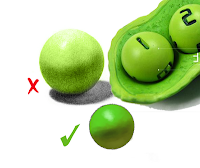
Ok so rendering: You just take black paint and add it to the local color or the shadow side and take white paint and add it to the local color of the light side right?
NO
 Light and color are a bit more complex: You need to consider the actual color/temperature of the light (for example indoor lights tend to be yellow, outdoor light tends to be blue).
Light and color are a bit more complex: You need to consider the actual color/temperature of the light (for example indoor lights tend to be yellow, outdoor light tends to be blue).
In addition you need to consider the fact that every object that is lit becomes a weaker light source in that objects local color. Therefore every objects that is surrounded by other objects (almost every single lighting scenario) is influenced by multiple light sources and multiple hues.
We can see the bounce back of colored light most clearly in smooth (mirror like) surfaces like the examples below....
Also notice the influence of the orange reflecting orange light into the lemon and the lemon reflecting yellow light onto the orange....
Here's another example of a digital painter thinking about the color influence of citrus fruit....















